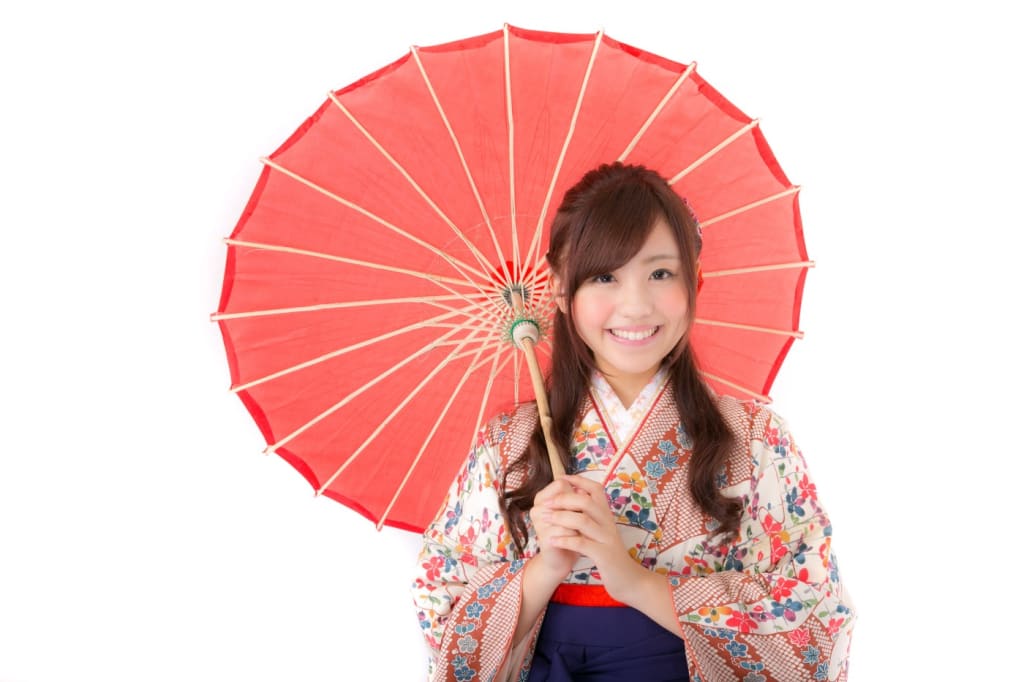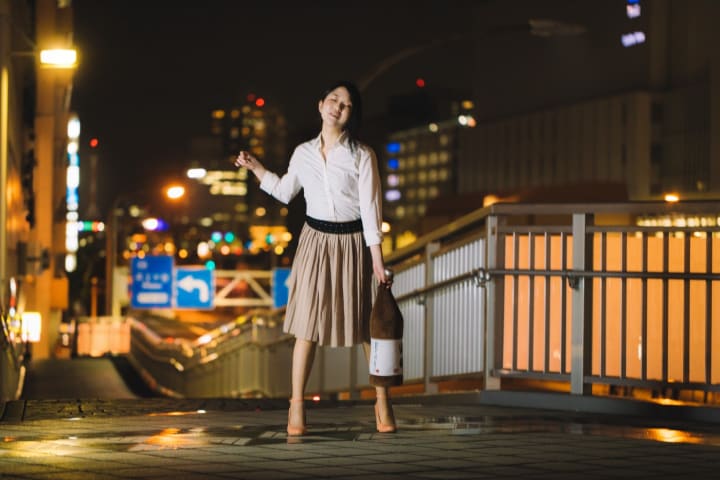11 Weird Things About Japan
That I still can’t get used to

As borders start opening up and Japan slowly starts letting travel begin after the corona pandemic, those of you who arrive in Japan for the first time might not know about some of the things that Japan has that might be different from your country. Japan has its own language, writing styles, sports, and cuisine. But it also has some other differences that take getting used to.

1. Masks
This might not be a unique or weird thing anymore as the coronavirus pandemic has made wearing masks a regular part of life but Japanese people have been wearing masks for years.
Originally most people around the world would only see surgical masks when they visit a hospital, scientific research facility, food factory, or clinic but it was rare to see someone wearing a mask on the bus next to you.
However, in Japan, masks are worn quite frequently and for a variety of reasons. The most popular reasons for wearing masks in Japan are for preventative measures against colds and flu.
Since Japan is a small, crowded and narrow country, many people are crammed together on trains, buses, homes, and offices. For this reason, many people wear masks if they are sick so they won’t spread their germs to others, as a gesture of politeness and care for the group. And now with Covid, many places require masks before entering.
But besides protection from viruses, there are other reasons that Japanese people wear masks. Those who suffer from pollen, dust, or other air allergies often wear masks during certain seasons to reduce the effects of the allergy which might cause skin irritation, runny nose, itchiness, and coughing.
Many Japanese people, especially young people wear masks for fashion and many shops sell masks with cool designs, or cute characters and colors.
Masks also may be worn for privacy and anonymity. Sometimes women who are hostesses or work in the sex industry will wear masks to hide their appearance while in public in case of being recognized. Many celebrities also wear masks when they are out and about to avoid being recognized as well.
And more recently, many people who are shy, suffer from mental disorders or depression often wear masks to hide their faces and feel less visible in public. A kind of protection from the outside world.

2. Garbage separation
You would think that garbage would be the same anywhere in the world. Use something, then discard it in a garbage can. And although now there are many rules about recycling and separation between garbage, plastics, and paper, it is still pretty simple to throw away your garbage in most countries.
However, in Japan, garbage separation is a complicated science. And you will find that there are not many garbage cans around the city. The best bet is to find them outside convenience stores or in train stations.
Depending on the city or town in Japan in which you live, there are different rules about garbage pick up, separation, and method. For example, towns sell specific colored bags that need to be purchased to place the different garbage in otherwise it won’t be picked up.
In the city, I live I need to buy a bag of garbage bags. A group of 10 bags costs around 5 dollars! If I don’t put my garbage in these bags, they won’t be picked up. And there are different colored bags for different things.
There is also a calendar that lists which days what garbage will be collected. Some bigger garbage like furniture or electronics needs to have special stickers purchased for pick up as well.
Some examples of the different categories of separation include burnable garbage, unburnable, plastics, pet bottles, glass bottles, cans, paper, cardboard, cartons, batteries, furniture, electronics, food waste, books and magazines, and clothing.
Each has to be placed in separate bags or containers and are picked up on specific days. If you make a mistake or just dump all your garbage into one bag, it most likely won’t get picked up and your neighbors will open it up and try to find out who it belongs to.

3. No tipping
This might be quite surprising considering Japan has one of the best service industries in the world. Staff in Japan are extra polite and will go out of their way to satisfy customers.
From bowing, greeting, serving, and answering all the customer’s questions, you will most likely not have any negative or disappointing experiences during your visit to Japan.
And the most interesting part is staff expect no tip or gratuity in return. Even if you try to offer tips, most likely they will refuse or be confused. And it’s not just at restaurants, there is no tipping at most places you would expect to tip in western countries like hotels, taxis, hair salons, tour guides, or delivery people.

4. No-shoe rule
Japan takes the no shoe idea to the extreme. All Japanese households have a special area at the entrance of their home called a genkan. This place is where people remove their shoes before stepping into the home.
Even stepping slightly into the home section while removing shoes will get a shocked gasp from Japanese people. Some homes provide house slippers. When going to the bathroom you must remove slippers to put on different slippers. And it’s not just the homes.
Many workplaces and schools require everyone to remove their outdoor shoes and use indoor shoes. Many restaurants, hotels, changing rooms, and gyms also require everyone to remove shoes, place them in lockers and replace them with indoor shoes.
My recommendation is when traveling wear shoes that can easily be slipped on and off, are light, and not too big so they can fit into lockers and shoe shelves.

5. Sleeping On Trains
Trains are a quiet space in Japan. Usually, people are reading books, listening to music, playing games on their smartphones, or sleeping. In the day Japanese are passed out on the train because of long commutes, lack of sleep, and overwork.
Talking on the train whether to someone next to you or on the phone will get you many strange looks. And despite the massive crowds of people crammed together on the train, the only sound will be of the train speeding along the tracks.
And miraculously, Japanese people who are deep in sleep somehow know exactly when their stop will be and wake up instantly as the doors open. A sixth sense of some sort.

6.Public Drunkenness
You will find that there are tons of drunk people on the trains and the streets in the evening after work. Most of them drink with their boss or coworkers.
And because of the massive amounts of liquor served and amazing deals such as all you can drink alcohol for $20/hour, you will find all ages from university students to businessmen and seniors hobbling the streets, passed out on benches, staircases, or even on street corners.
And the amount of puke on the streets on a Friday and Saturday night is ridiculous. Especially in the city where most people commute via train and bus, no one is driving so the bars are filled until the last call with groups of intoxicated patrons.


7. Toilets
Toilets are a little different in many countries and areas around the world but Japan has the most interesting and biggest gap in toilet styles that will shock tourists who have never been here.
Japanese toilets range from the most basic hole-in-the-ground squat style toilet to the most modern enhanced toilets with gadgets and sensors. Depending on the area you visit you might come across old-fashioned traditional toilets that are squat style.
Usually found in old train stations, the countryside, and many older buildings, these toilets usually don’t have toilet paper and require squatting in a position that many Westerners are not used to. They are also still available and found in modern bathrooms as an alternative to Western-style toilets.
On the opposite end, many restaurants, hotels, airports, shopping malls, and Japanese homes come with modern toilets that have many features like automated seat lifter, bidet spray function, music, and noises to camouflage sounds, deodorizing aromas, and seat warmers. They are motion-sensitive and sometimes even have voice command features.
I highly recommend the modern style unless you are very limber and flexible.

8. Vending machines
Japan is known for two things when it comes to vending machines; the amount and the variety. Japan has the most vending machines per capita in the world with over 5 million spread across the country.
They can be found in all the big cities, train stations, street corners, and even in remote places in small towns like near forests and mountains. There are even vending machines next to temples and shrines in case you are thirsty mid-pray.
The variety of products sold in vending machines is also incredible and sometimes strange. There are typical vending machines that sell coffee, soft drinks, and snacks but traveling around Japan you are bound to find vending machines that sell objects you would never expect to find in vending machines.
You can find ice cream, books, stationery, fruits and vegetables, rice, hot meals, and even clothing. And the rumors that you can find vending machines that sell women’s used underwear are true. If you head to Akihabara, which is the anime and manga capital of the world, you can find vending machines that sell these rare hentai items.

9. Love hotels
Love Hotels are a popular and important part of Japanese culture that has been around for ages. A place for young Japanese couples to go when they want to be intimate, these hotels grew out of the need for privacy as Japanese homes are relatively small and cramped.
Often large families have to share rooms and there is very little privacy as walls are thin and space is limited. For this reason, many couples have to find somewhere outside of the home where they can go for a few hours.
Regular hotels charge nightly, require reservations, and are quite expensive whereas love hotels offer short stays and include many benefits that other hotels don’t provide.
Usually, love hotels can easily be spotted by the strange and interesting designs and themes as well as the large neon billboards. Located near train stations and highway exits, there are even big love hotel districts in every city in Japan. The most popular one in Tokyo is in Kabuki-Cho.
Love hotels do not require any form of I.D. and check-in is usually done via touch screen so you never have to come face to face with any staff, making it very discreet.
Love hotel rooms are usually larger than regular hotel rooms, have large flat-screen TVs with movies, big bathrooms with jacuzzi bathtubs, rental cosplay costumes, free drinks, dessert, and even a variety of amenities like bath salts, premium beauty products, and health goods.
Depending on your tastes, you can stay in rooms that are decorated in your favorite style like a pirate ship, prison, classroom, Hello Kitty room, UFO spaceship, various eras, or color motifs.
And on a side note, although there used to be a lot of love hotels that discriminated against race and sexuality, now it is much more accessible and you will most likely have no problems renting a room whether you are a foreigner or part of the LGBTQ groups.

10. Bowing
You might think that Japanese people bowing is a stereotypical gesture found in movies about ancient Samurai, but bowing is a huge part of everyday Japanese culture.
There is a bow for every occasion from greeting to farewell. Much like handshakes in the West, bowing is a form of bonding, showing respect, or thanking someone.
In workplace situations, subordinates bow to their bosses, staff bow to customers, and everyone bows to each other when arriving or leaving work. Introductions involve bowing and presenting business cards. Agreeing on business partnerships and attending meetings also requires bowing before and after.
Even outside of work you will see people bowing or nodding their head when greeting or passing by someone they know. Train staff, restaurant staff, shop clerks all bow when welcoming or thanking customers. Even friends saying goodbye after dinner or drinks will bow to each other as they say goodnight.
As a tourist, you might not be used to all the bowing going on but bowing goes a long way when interacting with Japanese people so it is a good idea to bow anytime someone helps you or serves you.

11. Kawaii Everything
Kawaii is the word for cute and is the most used word in Japan as there are so many kawaii things you will come across while in Japan. The kawaii culture of Japan has increased and spread with the popularity of anime, manga, video games, and Idol culture.
Japanese women wear cosmetics and clothes with cute colors and designs to make them look younger and more kawaii. You will find kawaii characters or mascots not only for children’s products like you would find in other countries but also for things you might not expect to be kawaii.
Banks, Insurance companies, the police, businesses, even funeral homes have cute characters or mascots attached to their company. Each town has its own cute character called a Yuru-kyara that is custom-made for their town to reflect the town’s characteristics or popular products.
Watching television, movies, and music you will notice that all the commercials, shows, and musicians tend to have cute colorful set designs, graphics, or billboards.
Visiting a new country or place is a great way to expand your mind, meet new people, learn the history and culture of others, and share experiences. Coming to Japan you will find things might be much different from what you are used to. But that is the fun of traveling and rather than a deterrent should be the reason you travel.
This article also appears here: https://medium.com/fml-or-bust/11-weird-things-about-japan-8a7cad380b56
About the Creator
S.A. Ozbourne
A writer with no history or perspective is a paintbrush with no paint!






Comments
There are no comments for this story
Be the first to respond and start the conversation.